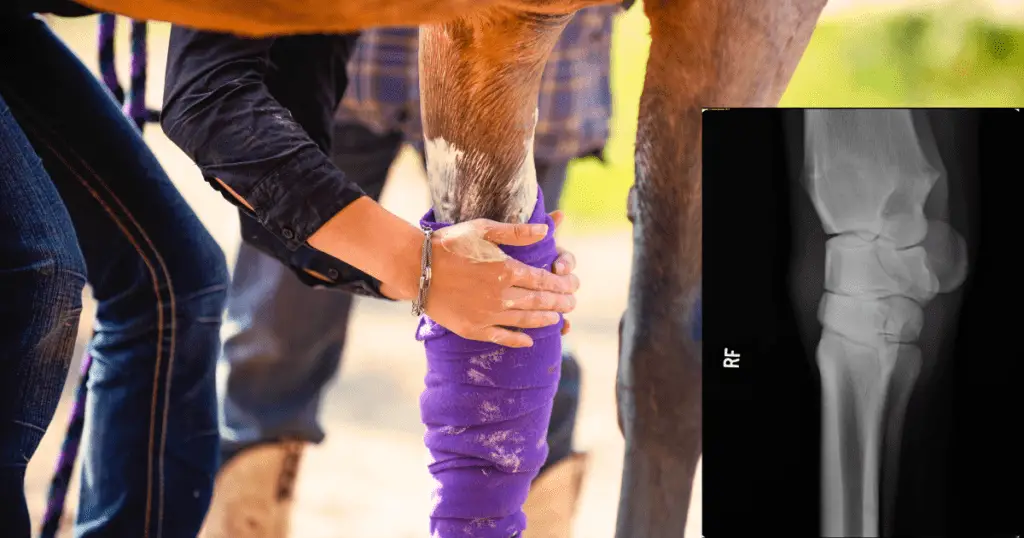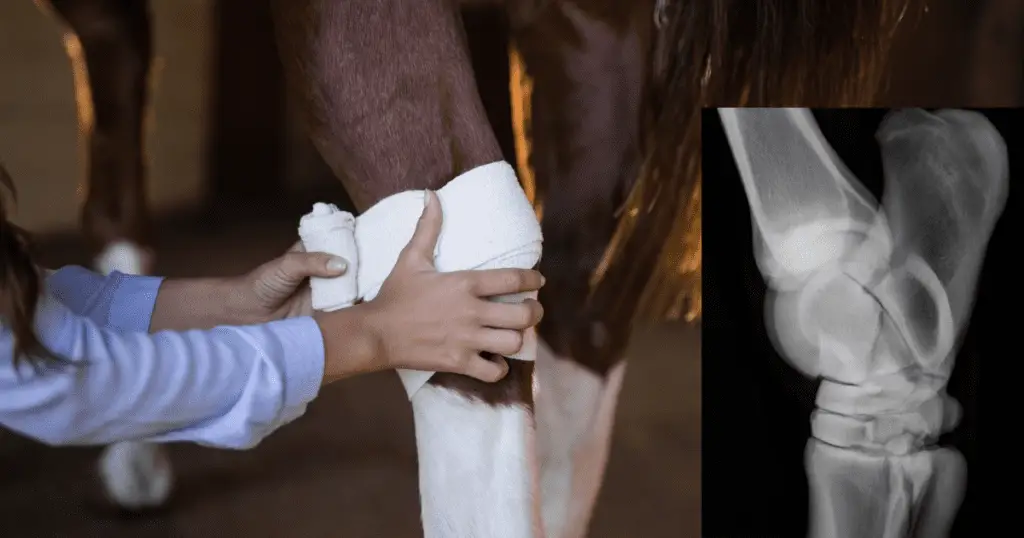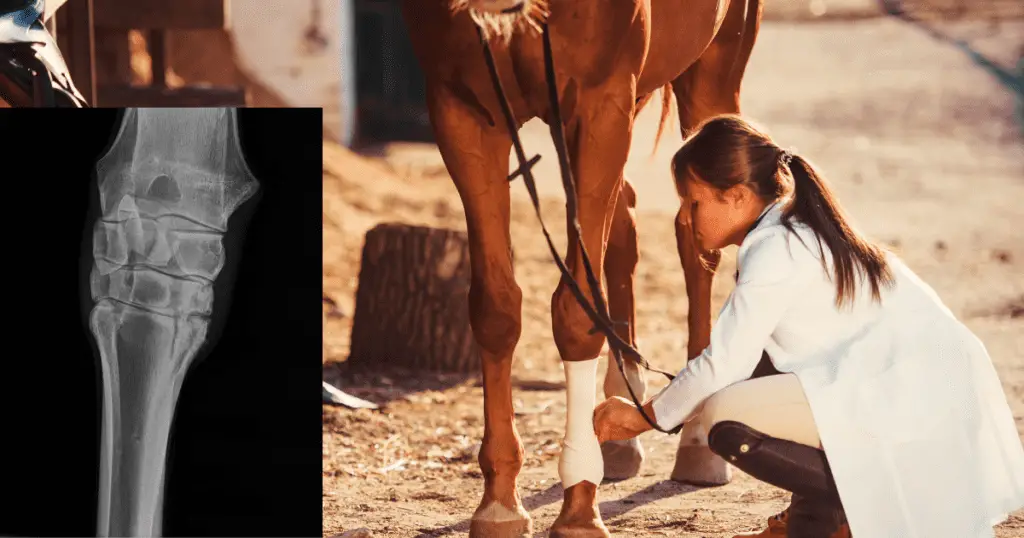Bandaging a horses carpus (knee) can help protect the joint and help recover from injury faster. Here is a step-by-step guide on how to properly bandage a horses carpus:
Materials Needed:
- protective pad such as melolin or poultice
- Cotton roll/ gamgee
- Elastic bandage such as vetwrap
- Adhesive tape or Elastoplast
- Scissors

How to bandage a horses carpus/knee- Complete 6 Step Guideline with Video
Step By Step Guideline
Step 1: Preparing the site.
Make sure the horse is calm and standing on a flat surface with its carpus clean and dry. It’s best to have someone hold the horses lead rope while you bandage to ensure they stay still. If there is a wound present it is best to clean the area with a disinfectant such as betadine or chlorhexidine after you examine the wound to see how deep it is and if there is joint involvement or important structures have been damaged. If you are unsure it is VERY IMPORTANT to seek veterinary advice as the outcome of your horses soundness relies on correct treatment immediately and not 2-7 days later.
Step 2: Apply the protective pad over the wound.
If the wound is fresh and contaminated use a poultice style pad cut to a size bigger than the wound. If the wound is clean or has been healing for some time you can use a melolin bandage that won’t stick to the wound.
Step 3: Applying Cotton Roll.
Start by applying a layer of cotton roll around the carpus. Begin at the bottom of the knee and wrap the cotton roll around the leg in a spiral pattern, making sure it’s snug but not too tight. Cover the entire knee with the cotton roll, ensuring that the joint is fully covered and cushioned.
Step 4: Applying Bandage Wrap/ vet wrap.
Next, apply the bandage wrap/ vetwrap over the cotton roll. Start at the bottom of the knee and wrap the bandage around the leg in a spiral pattern, making sure it’s snug but not too tight. When you get to the joint make sure you use a figure 8 pattern around the joint so you don’t damage the accessory carpal bone at the back of the knee ( the knobbly, bony bit at the back of the knee). Keeping this bone free will also help stop friction or bandage sores occurring. Use scissors to cut the bandage when you reach above the knee.
Step 5: Inspecting the Bandage Once the bandage is complete.
inspect it to ensure that it’s snug but not too tight, and that the knee is covered and supported. Make sure there are no wrinkles or bumps in the bandage that could cause discomfort or pressure points on the horses leg and that the accessory carpal is free. Now you can place some adhesive bandage/ Elastoplast at the top of the bandage to help prevent slipping of the bandage. Place a few wraps of Elastoplast onto hair and the first layer of the vetwrap.
Step 6: Monitoring the Horse.
It’s important to monitor the horse regularly while the bandage is in place to ensure that it stays in place and doesn’t cause any discomfort or rubbing. If the horse shows any signs of discomfort or the bandage begins to slip or loosen, remove it and reapply.
Video: How to Bandage A Horses Carpus/Knee
Conclusion
Overall, bandaging a horses carpus takes practice and attention to detail. If you’re unsure or inexperienced, it’s best to seek guidance from a veterinarian. A poorly applied bandage can cause more damage than no damage sometimes.
Also Read:



